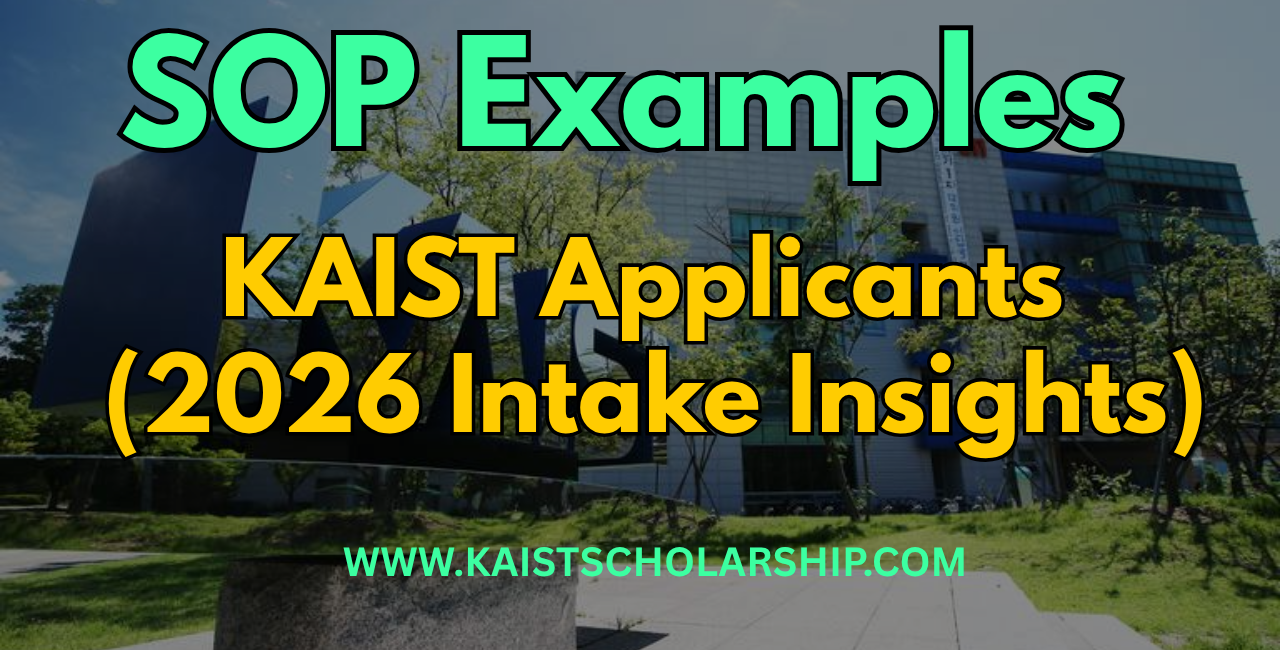A good way to write a strong Statement of Purpose (SOP) for KAIST is to look at real examples. Each SOP is different but winning ones usually have clear structure and personal details.
This post shows two KAIST SOP Examples. One is from an undergraduate who got accepted and one is from a graduate student (MS or PhD). You will see why they worked and how to avoid common mistakes.
Why Study SOP Examples?
Before diving in, understand this: Do not copy. These SOPs are for learning, not duplication. Use them to:
- Understand tone and structure
- See how to connect personal stories with academic goals
- Learn how to tailor content for KAIST
Example #1: Undergraduate Applicant (Computer Science)
Statement of Purpose – KAIST 2026 Undergraduate Admission
My name is Arjun Patel and I am applying to the Department of Computer Science at KAIST for the 2026 undergraduate intake. I have always been interested in how technology affects our lives especially in fields such as artificial intelligence and data science.
During high school I placed in the top three percent nationally in the Indian Science Olympiad and got recognition in the ACM High School Coding Challenge. For my final year project I built a Python based traffic monitoring system which was shown at a regional exhibition. These activities helped me learn more about machine learning patterns and how algorithms work.
KAIST seems like the kind of place I am looking for. I noticed its work in AI4Good the Human Centered Computing Lab and its partnerships with other schools around the world. I want to study in a setting that focuses on important theory and also on making a difference.
When I finish my studies I want to help with open source AI work and focus on the connection between technology and doing what is right. I also hope to support students in India who cannot access proper computer science programs.
I enjoy learning and solving problems and I care about using tech to make things better. I believe KAIST is the right place for me to continue learning and improving. Thank you for reviewing my application.
Why This SOP Works
- Tailored to KAIST programs and labs
- Mentions specific achievements with measurable proof
- Includes personal motivation + future plans
- Balanced tone: humble yet confident
Example #2: Graduate Applicant (MS in Bioengineering)
Statement of Purpose – KAIST 2026 Graduate Admission MS
I am Fatima Elahi applying to the Masters program in Bio and Brain Engineering at KAIST for the Fall 2026 semester. I hold a Bachelors degree in Biomedical Science from the University of Lahore and have a strong interest in neural rehabilitation technologies. I want to do research that connects healthcare and engineering.
My final year project focused on ways to help stroke patients recover movement using non invasive brain stimulation. That experience led me to a research internship at the Lahore NeuroTech Lab where I helped write a paper about brain computer interfaces that work through EEG signals.
I picked KAIST because of the Biointelligence Lab. Its work with wearable brain sensors fits well with the kind of research I want to do. KAIST also supports teamwork across subjects and its Global R and D center adds even more learning chances.
I hope to go for a PhD later and work on making neuroengineering products for use in real hospitals especially those with fewer resources. I care a lot about making lab discoveries useful for patients who need them most.
I bring good lab skills a serious approach to research and a strong will to create tools that help people with disabilities. I look forward to joining KAIST and learning from the community there.
Why This SOP Works
- Focused on a clear, research-driven goal
- Tailors the SOP to specific labs and faculty
- Connects past work with future ambitions
- Strong use of metrics (papers, thesis, internships)
If you haven’t yet created your SOP then you must read our complete KAIST SOP writing guide here.
Mistakes These Students Avoided
| Common Mistake | These SOPs… |
|---|---|
| Being too generic | Mentioned specific labs, projects, and professors |
| Talking only about grades | Balanced achievements with motivation and values |
| Copying a template | Used a unique, personal voice |
| Failing to mention future goals | Clearly connected KAIST to long-term plans |

